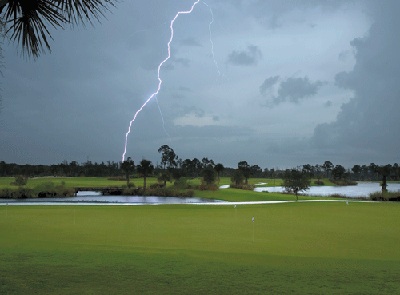 There’s a memorable scene in Caddyshack – one of many – in which a local bishop decides to sneak in a quick nine holes before a storm building in the distance rolls in. The round starts off great, and the bishop asks his caddy, played by Bill Murray, if he should keep playing. By now, it’s already pouring. Unimpressed, Murray responds: “I don’t think the heavy stuff’s going to come down for quite a while.”
There’s a memorable scene in Caddyshack – one of many – in which a local bishop decides to sneak in a quick nine holes before a storm building in the distance rolls in. The round starts off great, and the bishop asks his caddy, played by Bill Murray, if he should keep playing. By now, it’s already pouring. Unimpressed, Murray responds: “I don’t think the heavy stuff’s going to come down for quite a while.”
Soon, the bishop’s good luck ends, and he blows a mid-length putt to keep going. But his problems are only beginning. Right after that, a bolt of lightning descends from the sky, striking the priest and leaving him glowing with electricity. It’s as if God himself has cast judgment on the work done by this man of the cloth.
This might seem a bit far fetched. Lightning strikes are rare, and when they do happen, it’s usually due to reasons that can be explained by science, not divine retribution. But the scene does point to one troubling fact: of all outdoor activities, Golf is among the highest in terms of lightning strikes.
According to IO9, only 8 people died while playing golf between 2006 and 2012, behind other activities like soccer, bike riding, and camping. Nevertheless, due to the fact that golf clubs are natural electric conductors, it’s good to be alert when a storm rolls in and you’re on the course.
There are a number of tips for avoiding lightning strikes on the golf course. About.com lists a few things you can do right away, such as avoiding your golf cart, staying away from water hazards, and avoiding isolated trees.
Usually, the best strategy is to stop playing and head for the pro shop. The round can always wait, and you don’t want to end up like that bishop.